VIRTUAL ART EXHIBITIONS OF THE CONFERENCE 2021
 Virtual Exhibition | Virtual group exhibition of young artists, leading the international scientific students’ conference „Forum of Ideas 2021“, organized by the Faculty of Arts and Education of Kaunas University of Applied Sciences, reveals what topics young artists are interested in and what visual and applied art forms they choose finding the best way to visualize their ideas. Some of young artists discover topics for their work by analyzing their experiences, feelings, emotions, part of them – are inspired by nature or urban landscape, while others, are interested in mystical, magical side of the surrounding world. Young artists encourage viewers to reflect on different themes, to discover what is close to them, and, perhaps, to look at some, ordinary, things in a new, creative way. Participants of the exhibition: Ofelija Parašinskaitė, Gintarė Anužė, Valentin Lucik, Ona Petrikytė, Daria Ludina, Rūta Grumadaitė, Diana Misevičiūtė, Santa Katkevica, Ilze Unzule, Ilona Pērkone, Baiba Uzulnika, Valentina Sinakova |
 Virtual Exhibition | DIFFERENT STORIES IN CREATION Exhibitors: Students Simona Tuomenaitė, Raminta Leonavičiūtė, Marija Šimaitytė, Ida Masaitytė, Jolita Jaciunskienė, Alicija Garbatavičiūtė. Exhibition curators: student Simona Tuomenaitė, lecturer Sigita Grabliauskaitė. Text prepared by student Simona Tuomenaitė, lecturer Sigita Grabliauskaitė. Kaunas University of Applied Sciences, Arts Academy Annotation of Exhibition |
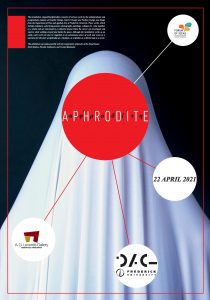 Virtual Exhibition | The installation “Αφροδίτη / Aphrodite” consists of various works by the undergraduate and postgraduate students of Graphic Design, Interior Design and Fashion Design and Image from the Department of Fine and Applied Arts of Frederick University. These works, which include sculptures, advertising posters, photographs, paintings, collages etc., come together as a whole and are reinvented in a collective layout where the viewer can investigate and explore while walking around and inside the space. Although the installation works as an entity, each works can also be regarded as an autonomous piece of work and count as a narrative for the story of Aphrodite as a Goddess, as a Mother, as a Mortal and as a Lover. The exhibition was made possible with the cooperation of Faculty of the Department: Doris Kailos, Nicolas Lambouris and Costas Mantzalos. Frederick University, Cyprus |
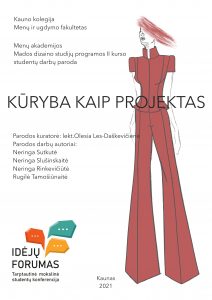 Virtual Exhibition | To “catch” an inspiration and do some nice sketches - that’s how sometimes designer work is imagined. Yet, nowadays the task to create a collection is more complicated and demands the whole spectrum of skills and characteristics. To analyze what’s happening in the world at the moment, to select trends, apply them to your own creative touch, set a task and complete it, to set a target audience and to offer an original product - all these and much more is just a preparation process. After them: sketching, creating, sewing, creating visual content and communicating. While creating clothing collections we set two goals: to fulfill the task and to set a personal creative idea. The first one is about collecting and sorting information, growing knowledge and analytical thinking. The second one is about developing creativity and personality. Sometimes the mix of these two is very organic and natural and sometimes it’s like contemporary art - provocative and shocking. Kaunas University of Applied Sciences, Arts Academy |
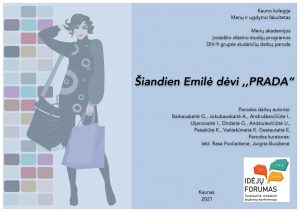 Virtual Exhibition | Students of Image Design study program of Kaunas University of Applied Sciences of Arts Academy are inviting you to the virtual exhibition of practical works „Emily is wearing “Prada” Today”. During the internship “Basics of Image Composition and Photography”, students got acquainted with the technical parameters of photographic equipment. The acquired knowledge was applied in practice by the young image designers by conducting a professional photoshoot, the results of which are presented in a virtual exhibition. After choosing a cinematic character, Emily Charlton (from D. Frankel’s film The Devil Wears Prada, 2006). During photoshoot, students created new images for her, revealing the most interesting stories about Emily's work in the “Runaway” editorial office and beyond. So, who is she, the new Emily, in the photos created the young image designers: a stylish young woman or a strict workaholic, a careful assistant or a clever intrigue, a flirtatious or dreamy romantic, or maybe a rebellious biker or even a secret agent? Exhibitors: Gabrielė Barkauskaitė, Aušrinė Jokubauskaitė, Ieva Andruškevičiūtė, Ieva Uljanovaitė, Gabija Dirdaitė, Ugnė Andziulevičiūtė, Karina Patašiūtė, Karolina Vitiekūnaitė, Evelina Gestautaitė. Practice supervisors: lecturer Rasa Povilaitienė (Image design study program), lecturer Jurgita Buožienė (Photography study program), practice coordinator: lecturer Violeta Dobrovolskienė (Image design study program coordinator). Kaunas University of Applied Sciences, Arts Academy |
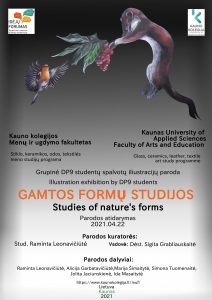 Virtual Exhibition | STUDIES OF NATURE’S FORMS Exibition participants: students Simona Tuomenaitė, Raminta Leonavičiūtė, Marija Šimaitytė, Ida Masaitytė, Jolita Jaciunskienė, Alicija Garbatavičiūtė Exibition curators: stud. Raminta Leonavičiūtė, lect. Sigita Grabliauskaitė Kaunas University of Applied Sciences, Arts Academy Annotation of Exhibition |
 Virtual Exhibition | Exhibition of batik works created by students of art study program DP9 of Kaunas kolegija of Arts, study program of glass, ceramics, leather, textile, decorative textile specialization, created during practice “Interpretation of Kaunas architecture”. Batik is a millennium old fabric decoration technique that originated from the island of Java. It was adopted and widely used by Japanese craftsmen, especially often for printing kimono suits. Motifs of flowers, foliage, butterflies, birds, fruits, shells, fish and their ornaments are often used. In essence, batik is fabric printing with dye and wax. "Batik" is an Indonesian word derived from the words "titik" or "tik", meaning "small bite" or "drop." This is reflected in the technology that requires diligence, rewarding for the subtle and effective result of attention. Batik allows the artist to stay free, because of the partially random nature of technology, that sometimes delivers unexpected results. Batik prints from clothes, that can be worn as traditional ceremonies such as childbirths, weddings and deaths, have come a long way and have become chic clothing all over the world. Everyone loves batik due to its simple designs and subtle art forms. In 2009 October, UNESCO recognized the art of batik as “A masterpiece of the oral and intangible heritage of mankind”. Interior design objects were created, interpreting images of Kaunas architecture, and using selected batik techniques. Single-layer (more colorful) and multi-layer (uniform coloring) batik technique was used. Creating with these different techniques has revealed a more diverse color palette and playfulness of colors, and interpretations of buildings take on a new angle. Batik works created by the students reveal a different image of the city, the interpretations that were created allow the viewer to look at architecture from a different angle and take a new interest in it. Exhibition participants: students Raminta Leonavičiūtė, Simona Tuomenaitė, Jolita Jaciunskienė, Marija Šimaitytė, Alicija Garbatavičiūtė Curators of the exhibition: student Marija Šimaitytė, lecturer Sigita Grabliauskaitė Kaunas University of Applied Sciences, Arts Academy |
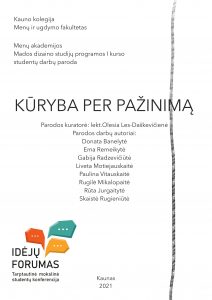 Virtual Exhibition | When you are studying your first year you are obsessed with embracing everything at once, but the truth is, that everything consists of tiny little parts. The process of creating clothes is the same - it’s a knowledge of a huge amount of specific information and combining it in one piece. Study subject “Clothing project 1” is intended for observing clothes assortment: classification of garments, constructional specifications of every clothing group, composition, additional elements and variety of designs. Unbelievable, but only the skirt has more than 50 official styles! However, while creating we do not only apply theory. While sketching we are creating the whole look in order to think and analyze which decisions will make the outfit successful, to accent the right parts and keep attention where we want it to be kept. Do we achieve our goal all the time? Absolutely not. But we learn, we fail, we grow by experiencing and most important - we are creating. And when we reach our goals-extremely distinctive and exciting designs are being born. These works make us realize that costume is a true kind of art. Kaunas University of Applied Sciences, Arts Academy |
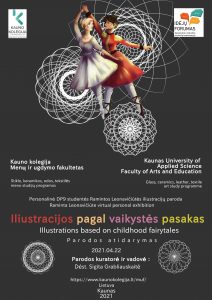 Virtual Exhibition | "Childhood tales are part of a journey into the future. This journey helps to achieve maturity and moral growth. We get introduced to the fairy tales in one of the most intense times of our lives – childhood, it’s the time when we are just getting to know the world. Fairy tales are able to show both, the good and the unpleasant sides of life, some even show that things might have unexpected outcomes. They can also evoke courage to face the unknown, provide knowledge and tools to control one’s inner world, help to make choices in difficult situations and encourage the growth of creativity. Unfortunately, as a person grows, a lot of times they turn away from fairy tales, they forget the magical and new world they experienced that taught them so much. Perhaps sometimes it’s useful to open up a fairy tale book and dive into that illustrated place that can become an indispensable support for adults. The personal exhibition of Raminta Leonavičiūtė, a student of the Glass, Ceramics, Leather and Textile Art study program, reveals the stories of three fairy tales: "The Nutcracker", "The Girl with Matches" and "Thumbelina". The twenty-seven colored illustrations help to empathize with the stories, help to see the world in which the action takes place, encourages the viewer to re-read these unique tales and relive the emotions these stories gave them so many years ago, that are still relevant to this day.” DP9 student Raminta Leonavičiūtė, lecturer Sigita Grabliauskaitė Kaunas University of Applied Sciences, Arts Academy |
 Virtual Exhibition | One of the most visible traces of the Soviet era in our country's urbanised environment are the apartment blocks. During the Soviet era, monotonous apartment blocks were built en masse. Today, more than a third of Lithuania's population lives in apartment blocks. Buildings with worthless architecture and gloomy, grey concrete simply fill Lithuanian cities. Soviet mass housing is a controversial but unique phenomenon. Some people don't like them, others just don't notice them. However, they are accused of creating the most monotonous built environment in the history of mankind, thus symbolising the uniformity of the environment and the rapidity with which it is built. In its time, it was a mass construction phenomenon in full swing, where a neighbourhood had to be built quickly and cheaply to accommodate tens of thousands of people. And because this idea of "cheap, fast, many and the same" was also deliberately in line with the socialist ideology of "don't stand out from the crowd, be equal to your peers". This ideology is thus also evident in the surviving apartment blocks and their monotonous architecture, which also contributes to the contemporary perception of the human identity of place and environment. Kaunas University of Applied Sciences, Arts Academy |
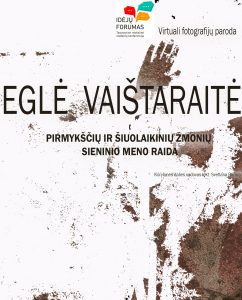 Virtual Exhibition | Through art, people can express themselves, understand themselves better, look at their surroundings differently, and awaken their minds and bodies. Art is not only about beauty in our eyes or ears, but it is also about conveying topical or important messages through art. But everything has its beginning. A history of all that we now have and can build on. The important thing is to remember the roots from which everything started. Art began in the Stone Age, when people started to depict the environment they saw on rocks. Animals, hunting moments, and cult rituals. And then there's the present. Wall art has survived, continues to evolve and adorns the walls of buildings. This is how the two worlds between past and present are linked. The photos compare what works from the past looked like and what they look like now The photographs reflect each other's stories, which are linked together through images and emotions. However, it is important to remember where what we have now came from. Kaunas University of Applied Sciences, Arts Academy |
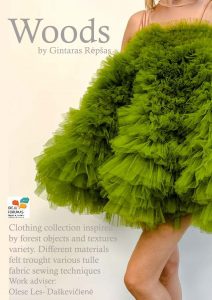 Virtual Exhibition | Clothing collection “Woods” Six-piece collection inspired by Lithuanian forests. Various forest nature objects are shown by using different tulle sewing techniques. Collection created in 2020. Kaunas University of Applied Sciences, Arts Academy |
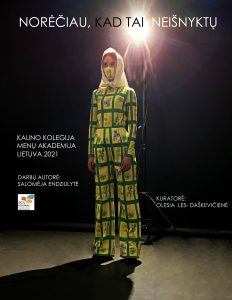 Virtual Exhibition | The garden depicted in the collection is a symbol of our roots, naturalness. Naturalness is shown in several ways: by recycling old trousers and leather jackets and creating original prints of endangered Lithuanian flowers, which reveal the importance of nature conservation. This shows the main idea of the collection that we must protect nature, be the creators and consumers of slow fashion. Kaunas University of Applied Sciences, Arts Academy |
